#Sanskrit
Text
Ms. Coll. 390, Item 2676, is a picture book, containing drawings and miniature paintings of birds and animals, mythological beings, scenes of daily life, court scenes, and more. Many of the pictures are unfinished, upside-down or overpainted, suggesting a work in progress or a sketchbook. It is written in Sanskrit, circa 1700-1850.
🔗:
#manuscript#sanskrit#south asia#18th century#19th century#drawings#art#history of art#indian art#india#animals#birds#painting#sketchbook#picture book#book history#rare books
318 notes
·
View notes
Text

वात्मानं बोध
Awaken to your true nature.
511 notes
·
View notes
Photo

Pratisara Mantra, 927 CE, found near Luoyang, China
2K notes
·
View notes
Text
About Vedic Scriptures

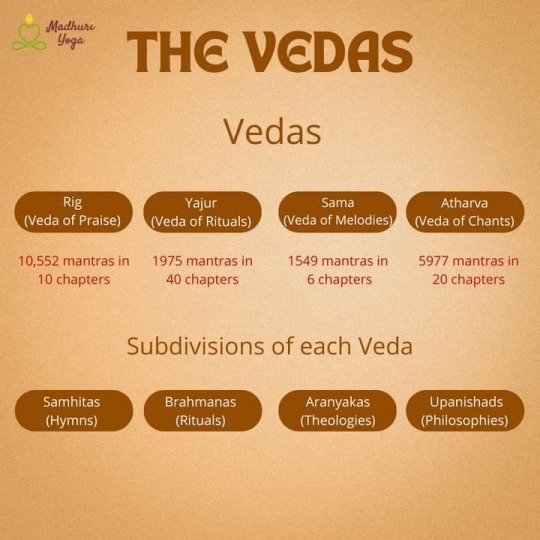

#vedic literature#hinduism#hindublr#sanatan dharma#ancient india#vedic culture#mantra#bharat#ancient indian history#puranas#sanskrit#languages#krishna#dharma#karma#hindu culture
228 notes
·
View notes
Link

“A 27-year-old PhD scholar finally cracked the riddle which has defeated Sanskrit experts since the 5th Century BC—by decoding a rule taught by “the father of linguistics” Pāṇini.
The discovery makes it possible to ‘derive’ any Sanskrit word—to construct millions of grammatically correct words including ‘mantra’ and ‘guru’—using Pāṇini’s revered ‘language machine’ which is widely considered to be one of the great intellectual achievements in history.
Leading Sanskrit scholars have described the discovery as ‘revolutionary’—and it now means that Pāṇini’s grammar can be taught to computers for the first time...
Pāṇini’s system—4,000 rules detailed in his greatest work, the Aṣṭādhyāyī which is thought to have been written around 500 BC—is meant to work like a machine. Feed in the base and suffix of a word and it should turn them into grammatically correct words and sentences through a step-by-step process.
However, until now, there had been a huge problem. Scientists say that, often, two or more of Pāṇini’s rules are simultaneously applicable at the same step, leaving scholars to agonize over which one to choose...
Thought to have lived in a region in what is now north-west Pakistan and south-east Afghanistan, Pāṇini taught a ‘metarule’ to help decide which rule should be applied in the event of a conflict...
Traditionally, scientists have interpreted Pāṇini’s metarule as meaning: in the event of a conflict between two rules of equal strength, the rule that comes later in the grammar’s serial order wins.
Rajpopat rejects this, arguing instead that Pāṇini meant that between rules applicable to the left and right sides of a word respectively. Pāṇini wanted us to choose the rule applicable to the right side. Employing this interpretation, Rajpopat found Pāṇini’s language machine produced grammatically correct words with almost no exceptions...
“This discovery will revolutionize the study of Sanskrit at a time when interest in the language is on the rise.”
Sanskrit is an ancient and classical Indo-European language from South Asia. It is the sacred language of Hinduism, but also the medium through which much of India’s greatest science, philosophy, poetry, and other secular literature have been communicated for centuries.
While only spoken in India by an estimated 25,000 people today, Sanskrit has influenced many other languages and cultures around the world.
Rajpopat, who was born in Mumbai and learned Sanskrit in high school, explained, “Some of the most ancient wisdom of India has been produced in Sanskrit and we still don’t fully understand what our ancestors achieved.
“I hope this discovery will infuse students in India with confidence, pride, and hope that they too can achieve great things.”
He said that a major implication of his discovery is that now we have the algorithm that runs Pāṇini’s grammar, we could potentially teach this grammar to computers.
“Computer scientists working on Natural language processing gave up on rule-based approaches over 50 years ago. So teaching computers how to combine the speaker’s intention with Pāṇini’s rule-based grammar to produce human speech would be a major milestone in the history of human interaction with machines, as well as in India’s intellectual history.”” -via Good News Network, 12/16/22
2K notes
·
View notes
Text
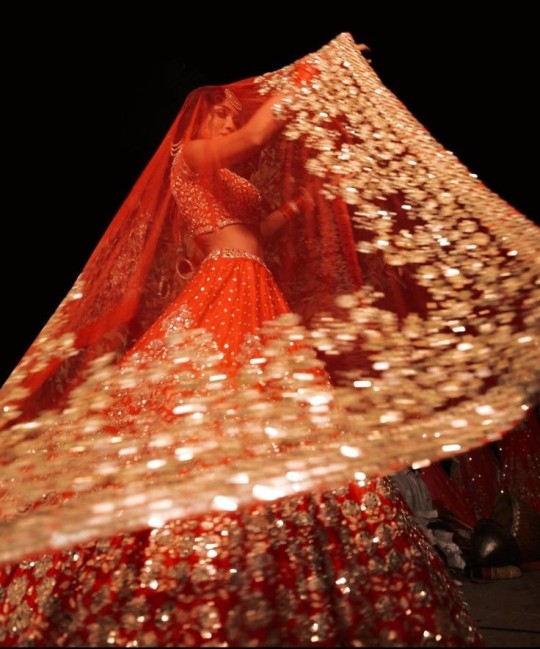
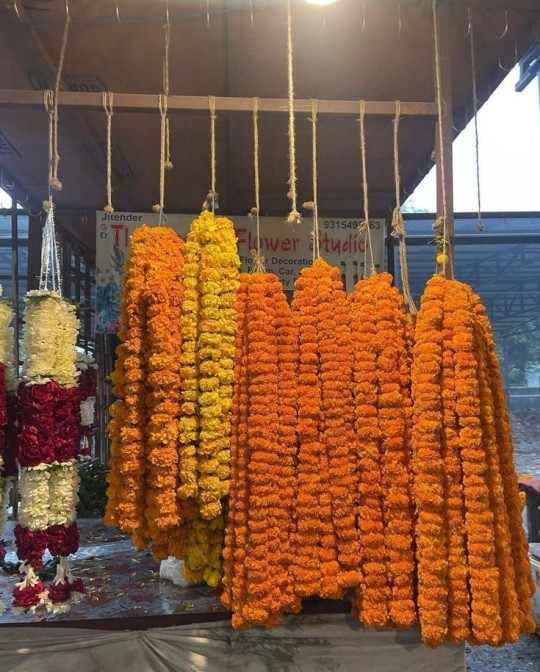

I love hozier's "I slithered here from Eden just to sit outside your door" BUT "banke maala preet ki tere tan pe jhar jhar jaun" I'd become a garland of love and fall on your body and "tu hi toh jannat meri, tu hi mera junoon, tu hi toh mannat meri, tu rooh ka sukoon" you are the heaven for me, you're my passion, you are my prayers, you are my soul's bliss and "tere naam se ji lu, tere naam se mar jaaun" I'd live by your name, I'd die by your name and "hawaoon mein lipta hua main, guzar jaunga tumko chu ke, agar man ho toh rok lena, thahar jaunga inn labon pe" I'm tangled with the breeze, I'll pass away after touching you, if your heart wants it, then I'll stay with you on your lips



Hindi is the language of love and longing
#india#desi dark academia#indian academia#sanskrit#indian aesthetic#indian poets#desi women#indian girl#south asian#scholary academia#desi aesthetic#desiblr#desi tag#desi tumblr#desi academia#bollywood aesthetic
817 notes
·
View notes
Text

English is part of a large language family that includes French, Welsh, Polish, Persian, Greek, and Albanian. They stem from a common ancestor reconstructed as Proto-Indo-European. The cardinal numerals from 1 to 10 illustrate their relationship well. Click the image for a selection.
#historical linguistics#linguistics#language#etymology#english#latin#french#german#spanish#welsh#irish#sanskrit#persian#polish#russian#italian#gothic#proto-germanic#proto-celtic#proto-indo-iranian#proto-balto-slavic#lithuanian#ancient greek#albanian#icelandic
88 notes
·
View notes
Text
In Sanskrit, there's a word called 'Viraha.'
It's about missing someone deeply. 'Viraha' is for when you're far from someone you love, but you still believe you'll be together again. It shows that love stays strong, no matter how far apart you are.
#relatable quotes#life quotes#thoughts#book quotes#inspiring quotes#quoteoftheday#relationship quotes#inspirational quotes#love quotes#romance quotes#sanskrit#ancient india#language#oldest language#indian culture
54 notes
·
View notes
Text
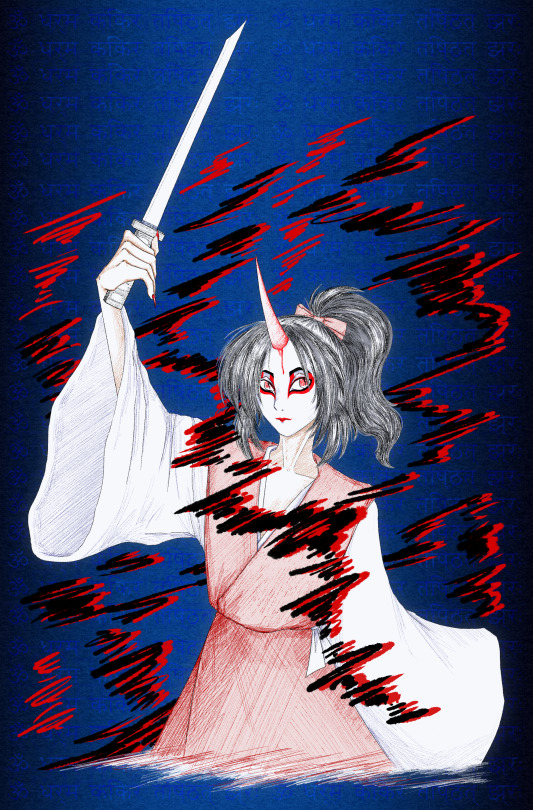
What came of that Konngara sketch I posted earlier.
By the way, if anyone here's good with sanskrit and vajrayana tradition tantras... Help me figure this out.
The text in the back is supposed to be the mantra adressing Konngara-douji/Kiṃkara (オン ダラマ コンガラ チシュタ サラ). The problem is, I can't seem to find it in its original sanskrit anywhere on the internet, and its katakana and latin transliterations aren't even consistent between websites that mention it. The text I've put in (ॐ धर्म किंकर तिष्ठत् झ्रः) is the least worst we've come up with. The last word is almost certainly incorrect. Does anyone know where to find the original mantra?
#own post#own art#art#touhou#touhou project#touhou pc98#highly responsive to prayers#konngara#linguistics#sanskrit#tagging those two so that people help me figure something out#details under the cut
55 notes
·
View notes
Text
The Monkey King - Sun Wukong who first appears in Chinese stories (Journey to the West) during the Ming Dynasty period 1368 to 1644 CE, well after the introduction of Buddhism to China in about 206-220 CE.
But, was he inspired by another Monkey hero/character of myth?

The prevailing and dominant theory among Asian scholars is ...yeah, likely.
That character, Hanuman, king of the monkeys (the monkey people -Vanaras- of Vedic myth!).
The story follows a Buddhist monk who is accompanied by Sun Wukong and others to travel west to India to obtain sacred Buddhist sutras. Many of their powers and personality traits are similar as well.
We know that Vedic god such as Indra have made their way as far as Japan to take root and be worshipped because of the spread of Buddhism.
As I've talked about before and is shown in texts such as the journey's of Ibn Battuta / Ibn Fadlan, storytelling was a weapon and powerful tool for idea transfer--propagation. Philosophy was huge in the old world - and places such as Nalanda - the first residential university in the world - invited scholars from all over such as Greeks from the west, and the Japanese. Buddhism became a vehicle for trading things such as: martial arts information, medicine, sciences, and of course, myths and stories.
However, as with stories, people usually altered/coopted elements and molded them to better suit their cultures and fancy. That's a thing as old as time. I've shared how the panchatantra stories and jatka tales are thought to be the inspiration for nearly 30-50 percent of all nursery rhymes, ballads, "fairy tales".
Anyways back to this theory - Chinese Indologist Professor Liu Anwu of Peking University has dedicated chapters to the comparisons (in one of his works) to further break down this theory focusing on consistent and or similar depictions of beats in Journey to the West that of Rama's story in Ramayama and the Buddhist sutras.
Even though today the story of Sun Wukong is a wholly Chinese story - it's important to note the power of oral storytelling and how it travelled evolved over thousands of years, and, just as important, the vehicles it used to do so. Not just storytellers and philosophers and travelers but religion! Philosophy!
This is a theme heavily commented on and shown in Tales of Tremaine, which is my love letter and sort of self PhD. in comparative storytelling, mythology, and story foundry through an Asiatic lens (hence a silk road analog) stretching along a similar route the silk road did from damn near as far as you can east (complete with the oceanic routes) to as west as old venezia, portugal, and spain.
Also note: this is the most popular theory atm, but the operative word is theory. Experts likely far better than you, Internet, so chill before you comment, are still debating this. I know last week some of you were doctors in sociopolitical relations, the music industry before that, and then you were leading virologists before that. Spare us simpler folks from your mighty genius just now and sit down.
The point here is the beauty of stories and their ability to travel and morph and comment on themes/points ideologies important to cultures while being entertaining and showing that humans like certain universal moments, beats, archetypes, tropes, and progressions in tales.
Now, is that because we've naturally been predisposed liking them, or the opposite in that everyone went, yo, i dig this, took it home and someone else went, this is cool but needs to be more US (insert culture) and retold it. And thus...timemachine noises speed up. Here we are today?
You might not know that about 35,000 Chinese words ( I said this instead of Mandarin because they don't just show up in one language) are derived from Sanskrit as well as Pali (a Middle Indo-Aryan Liturgical Language -- meaning language of sacredness/religious use, in this case connected to sacred Buddhist texts). It is important to make the distinction, because, Internet!
Sanskrit did not SHAPE the Chinese languages. They evolved on their own. This is just a commentary on how words/stories shaped over travel in this case strongly through the spread of Buddhism.
Religion was the mover.
Back from quick bathroom break. Going to add again - INSPIRED is the keyword here.
INSPIRED.
Sun Wukong is his own mythos/character. Influence doesn't nor can claim dominion over everything in a later tale. Sun Wukong has gone on himself to inspire legends and characters Outside of China - re: most famously and legendary?
Son Goku - who is openly a Sun Wukong inspired character.
...hell, tbh, he might be the most famous monkey inspired super powered character now. Dude makes soccer stadiums air his fights. @_@.

#monkey king#monkey king journey to the west#hanuman#buddhist#buddhist monk#sun wukong#vedic gods#Japan#China#chinese legend#storytelling#mythology#myths and legends#asian mythology#mandarin#Sanskrit#pali#chinese language#dbz#dragon ball#dragon ball z#inspired#inspired by#the silk road#silk road retelling#philosophy#philosophers#journey to the west#fairy tales#nursery rhymes
26 notes
·
View notes
Text
Sanskrit and Greek cognates
mind - मनस् (mánas) - μένος (ménos)
great, big - मह (mahá) - μέγας (mégas)
knee - जानु (jānu) - γόνυ (gónu)
boat - नौ (naú) - ναῦς (naûs)
water - उदन् (udán) - ὕδωρ (húdōr)
winter, cold - हिम (himá) - χεῖμα (kheîma)
a field - अज्र (ájra) - ἀγρός (agrós)
house - दम (dáma) - δόμος (dómos)
night - नक्ति (nákti) - νύξ (núx)
a foot - पद् (pád) - πούς (poús)
mouse - मूष् (mūṣ) - μῦς (mûs)
reward - मीढ (mīḍhá) - μισθός (misthós)
donor - दातृ (dātṛ) - δώτωρ (dōtōr)
lady - पत्नी (pátnī) - πότνια (pótnia)
star - स्तृ (stṛ) - ἀστήρ (astēr)
sleep - स्वप्न (svápna) - ὕπνος (húpnos)
a month - मास् (mās) - μείς (meís)
man - नर (nara) - ἀνήρ (anēr)
name - नामन् (nāman) - ὄνομα (ónoma)
door - दुर् (dúr) - θύρα (thúra)
a fox - लोपाश (lopāśá) - ἀλώπηξ (alōpex)
a bend - अङ्कस् (áṅkas) - ἄγκος (ánkos)
bone - अस्थि (ásthi) - ὀστέον (ostéon)
intestine - अन्त्र (ántra) - ἔντερον (énteron)
a reproach - निन्दा (nindā) - ὄνειδος (óneidos)
ray - अक्तु (aktú) - ἀκτίς (aktís)
flesh - क्रविस् (kravís) - κρέας (kréas)
to bite - दशति (dáśati) - δάκνω (dáknō)
to tame - दाम्यति (dāmyati) - δάμνημι (dámnēmi)
lifetime - आयु (āyu) - αἰών (aiōn)
power - क्रतु (krátu) - κράτος (krátos)
old - जरत् (járat) - γέρων (gérōn)
a yoke - युग (yugá) - ζυγόν (zugón)
wood, tree - दारु (dāru) - δρῦς (drũs)
stick, tree - दण्ड (daṇḍá) - δένδρον (déndron)
root, herb - मूल (mūla) - μῶλυ (mõlu)
flower, leaf - फुल्ल (phúlla) - φύλλον (phúllon)
fat, ointment - लेप (lépa) - λίπος (lípos)
dust, particle - कण (káṇa) - κόνις (kónis)
#sanskrit#greek#ancient greek#indo-european#proti-indo-european#comparative linguistics#linguistics#languages
125 notes
·
View notes
Text
Ramayan in one picture 🚩

#ramayan#hindublr#hinduism#jai shree ram#sita ram#hanuman ji#ayodhya#ravana#sanskrit#vedic literature#valmiki ramayan
120 notes
·
View notes
Text
Ms. Coll. 390, Item 3020, contains the legend of Kālaka, important to the Śvetāmbara Jains and read during the first night of the Paryuṣaṇā, telling of this figure's conversion and initiation to Śvetāmbara Jainism, his overthrow of the wicked king Gardabhilla of Ujjain, as well as his career as guru and renunciant. It contains seven other paintings from events in the monk's life. Written in Sanskrit, circa 1700-1850.
🔗:
37 notes
·
View notes
Text


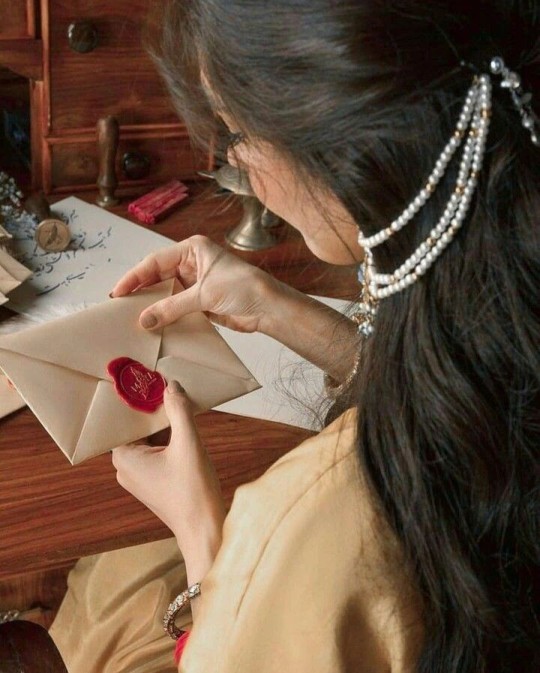
I love Taylor's "Can I go where you go? Can we always be this close?" BUT these are ✨ DIVINE✨"hothon se chu lo tum, mera geet amar kar do, ban jao preet meri, meri jeet amar kar do" touch my soul (me) with your lips, make my song immortal, become my love, make my victory immortal and "bin puche mera naam aur pata, rasmon ko rakh ke pare, char kadam bas char kadam, chaldo na saath mere" without asking me my name or my address, keeping the customs and traditions away, four steps, just four steps, walk with me please and "janam janam janam saath chalna yuhi, kasam tumhe kasam aake milna yahin, ek jaan hai bhale do badan ho juda, meri hoke hamesha hi rehna, kabhi na kehna alvida" lives, all my lives, walk with me like this, give me your promise to come and meet me like this, there's one soul among us even if our bodies are apart, stay mine forever, don't ever say goodbye and "barkha, bijli, baadal jhoothe, jhoothi phoolon ki saugatein, sacchi tu hai, sachha main huin, sacchi apne dil ki baatein" the rain, the thunder, the clouds are all liars, there are lies in the gifts of all the flowers, only you are true, and so are the conversations of our hearts


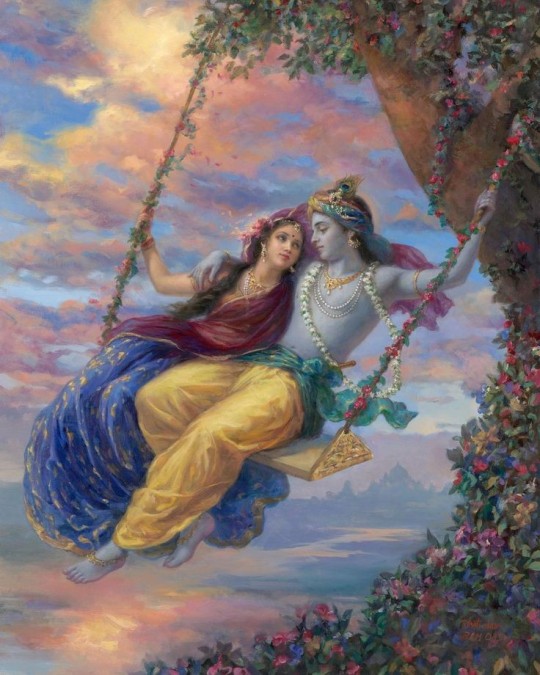
Hindi is the language of love and promise (2)
#india#desi dark academia#indian academia#sanskrit#indian aesthetic#indian poets#desi women#indian girl#south asian#scholary academia#desi music#desi academia#desi aesthetic#love language#Hindi#hindi academia#हिन्दी#Hindi is the language of love
159 notes
·
View notes
Text

Sun, the word for the blinding nuclear fusion reactor in the sky, stems from the same Proto-Indo-European word as French soleil, Swedish sol, Welsh haul, Irish súil, and Ancient Greek hēlios, whence the prefix helio-. They grew apart by the ravages of time. Here's how.
#historical linguistics#linguistics#language#etymology#lingblr#sanskrit#celtic languages#romance languages#germanic languages#ancient greek
324 notes
·
View notes
Text
A look at the etymology of the "arithmonyms" from the Locked Tomb series by Tamsyn Muir, arranged by difficulty level.
Easy:
-Deuteros = Ancient Greek δεύτερος (deúteros) "second"
-Dve = Pan-Slavic две/dvě "two"
-Tettares = Ancient Greek (Attic) τέττᾰρες (téttares) "four"
-Chatur = Sanskrit चतुर् (catur) "four"
-Pent = Ancient Greek πέντε (pénte) "five"
-Quinque = Latin quīnque "five"
-Sextus = Latin sextus "sixth"
-Hect = Ancient Greek ἕκτος (héktos) "sixth"
-Sex = Latin sex "six"
-Septimus = Latin septimus "seventh"
-Asht = Sanskrit अष्ट (aṣṭa) "eight"
-Oct = Latin octō "eight" or Ancient greek ὀκτώ (oktṓ) "eight"
-Nav = Sanskrit नव (nava) "nine"
Intermediate:
-Dyas = Ancient Greek (late medieval pronunciation) δῠᾰ́ς (duás) "the number two, couple, pair, diad"
-Tern = Latin ternī "three each, three at a time"
-Trinit = Latin trīnitās "the number three, triad, trinity"
-Tetra = Ancient Greek τετρᾰ́ς (tetrás) "the number four, the fourth day", or τετρα- (tetra-), prefixed form of τέττᾰρες (téttares) "four"
-Quinn = Latin quīnī "five each, five at a time", or quīn-, prefixed form of quīnque "five"
-Shodash = Sanskrit षोडश (ṣoḍaśa) "sixteen"
-Ebdoma = Ancient Greek (Koine pronunciation) ἑβδομάς (hebdomás) "a group of seven"
-Nonagesimus = Latin nōnāgēsimus "ninetieth"
-Novenarius = Latin novēnārius "containing or consisting of nine things"
-Novenary = Latin novēnārius (see above)
Advanced:
-Tridentarius = Neo-Latin tridēntārius "like a trident", from Latin tridēns "three teeth"
-Zeta = Sixth letter of the Greek Alphabet (although in Ancient Greek numerals it actually represents the number 7, because the original sixth letter was the now disused digamma)
-Heptane = Neo-Greek-Latin compound heptane, "saturated aliphatic hydrocarbon C7H16" (more literally "pertaining to the number seven, seven-like")
-Nonius = Latin Nōnius, a first name derived from the Nōnia plebeian family, ultimately from nōnus "ninth"
-Nova = Latin novem "nine" and/or nova "new" (it's been suggested that the Proto-Indo-European root *h₁néwn̥ "nine" is derived from the root *néwos "new")
Expert:
-Octakiseron = Ancient Greek ὀκτᾰ́κῐς (oktákis) "eight times" + unclear suffix, could have been constructed by analogy with -τερον (-teron, as in δεύτερον (deúteron) "second") and -μερον (-meron, as in ἑξαήμερον (hexaḗmeron) "six days"); alternatively based on or reinforced by the French diminutive suffix -eron, an extension of the diminutive -on (itself a merger of several Latin and Frankish suffixes), built by analogy with words like quarteron "quadroon" (from quartier "quarter, district" + -on); yet another possibility is Ancient Greek εἴρων (eírōn) "one who says less than they think, dissembler, pretender"
-Noniusvianus = not clear, perhaps a portmenteau of Latin Nōnius (see above) and noviēs "nine times", with an adjectival ending -(i)ānus.
-Nigenad = perhaps based on Proto-West Germanic *nigundō "ninth" (variant of the more common *neundō), or one of its descendants (Dutch negende, Middle English nyghend, West Frisian njoggende…); possibly reinforced by Old English nigonfeald "ninefold"
#the locked tomb#gideon the ninth#harrow the ninth#nona the ninth#arithmonym#etymology#tamsyn muir#linguistics#latin#greek#sanskrit#numbers#germanic#indo european#slavic#worldbuilding
231 notes
·
View notes